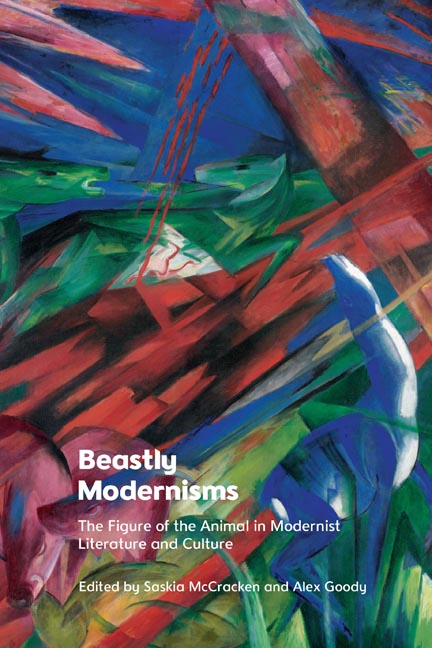Book contents
9 - Resistant Reindeers: Human–Animal Relations and Cultural Self-Appropriation in Sámi Art and Literature
Published online by Cambridge University Press: 21 October 2023
Summary
At the centre of the small-scale embroidered scene is a solid brownish entity, depicted in abstract and minimalist form. It is shaped like a bottleneck with a sketchy crown at the top, which almost doubles its total size. As if the figure was wrapped in barbed wire, it is surrounded by amorphous black lines which create a physical distance from the other pictorial actors: to the left and the right, there are three identifiably human figures, two adults and one infant. These three are shown in more detail than the first figure, with distinct facial and sartorial attributes. Although there is no further indication of body structure, the context makes it clear that the abstract brownish entity is supposed to (re)present a reindeer torso and head, and the surrounding black lines show a number of reindeer antlers.
The composition defies easy interpretation. Is the nonhuman animal meant to be alive or dead? Do we look at them from the side or below, indicating either a same-level or an inferior positioning (and perspective) of the spectator? Although the stylised reindeer seems to be bound in chains, immobilised and exposed to human-driven violence, they are displayed in a powerful topological arrangement and posture. The crowned torso is placed in an elevated position, the human figures kneel down facing them as if they were some sort of ritual sculpture or higher being. The composition recalls the symbolic imagery of sacrifice or martyrdom. The attitude towards the nonhuman animal figure can be read as both humiliating and submissive.
In addition, the vast number of antlers render the reindeer visible not only as an individual animal, but also as a representative of their species. A plurality of reindeers is suggested by pictorial means: while the antlers are depicted, the animate bodies they once grew out of and were connected to are absent and gesture towards an absent presence. The antlers – which both male and female reindeers grow and shed annually – convey ambiguous meaning, oscillating between life and death, agency and objectification, resistance and surrender.
The narrative embroideries by textile artist and painter Britta Marakatt- Labba (b. 1951), whose works were among others exhibited at Documenta 14 (2017) as part of Sami Artist Group, show motifs of traditional Sami lifestyle in cyclical and linear arrangements.
- Type
- Chapter
- Information
- Beastly ModernismsThe Figure of the Animal in Modernist Literature and Culture, pp. 159 - 178Publisher: Edinburgh University PressPrint publication year: 2023

